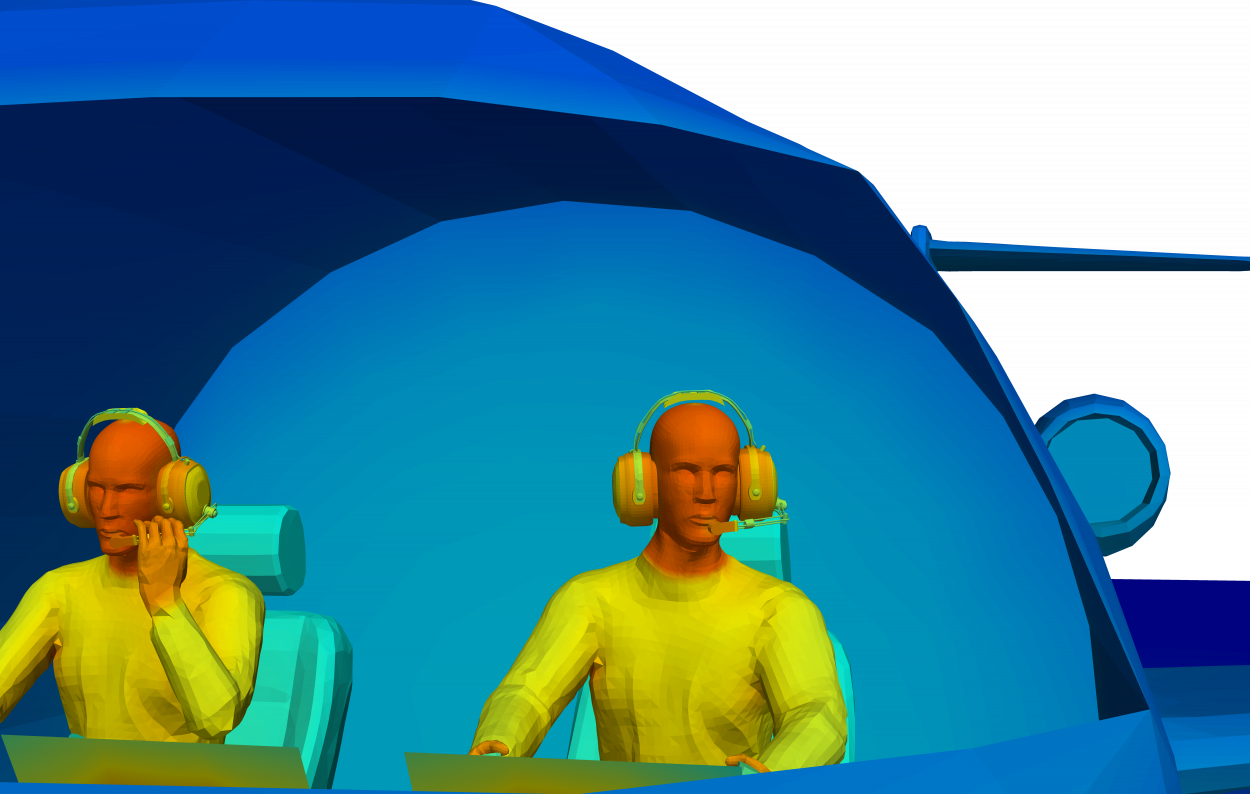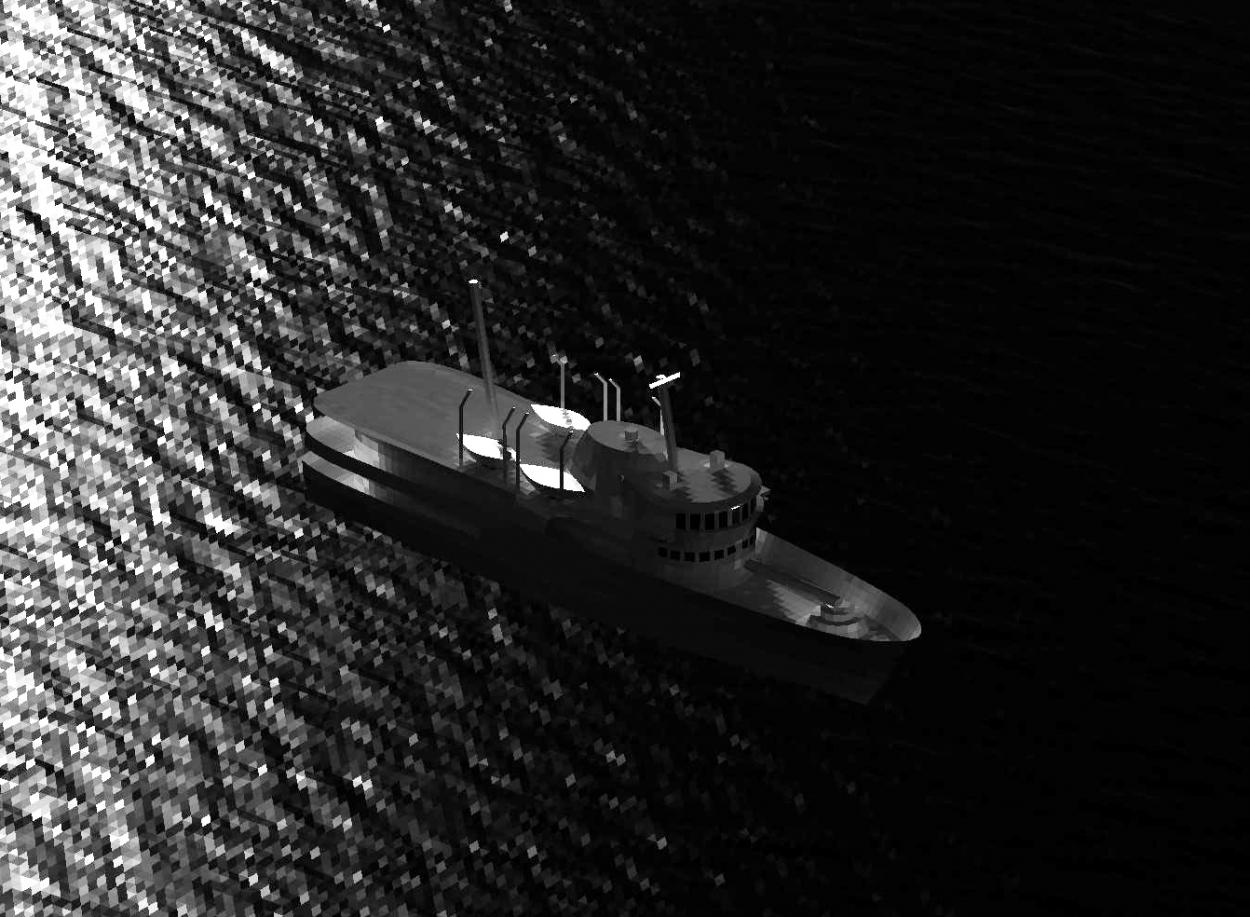Millimeter-wave imaging simulation is a novel technology developed by ThermoAnalytics to predict the resulting at-sensor radiometric solution.
Passive millimeter-wave scanners create images of the whole human body using ambient radiation in the millimeter wavelengths. The body, clothing, and objects; such as weapons, prostheses, and medical implants, have varying degrees of spectral emissivity, reflectivity, and transmissivity in the MMW bands. Millimeter-wave imaging simulation is a novel technology developed by ThermoAnalytics to predict the resulting at-sensor radiometric solution. This requires expert planning by our simulation engineers to define the transmissive and reflective properties of each layer of clothing, skin, and objects of interest.
Because MMW behavior follows the same first principles physics of other wavebands, our decades of experience predicting EO/IR radiometric signatures serves as the foundation for accurate passive MMW simulation. Often the goal is to determine what size of object of a given material can be detected under a range of clothing and other noise sources. Often the goal of our simulation effort is to train a machine learning system to flag MMW image frames that might show the presence of a weapon or drug contraband. Image outlier algorithms are an established technology that benefits from large volumes of training imagery produced under controlled conditions. MMW datasets are produced by ThermoAnalytics' unique combination of software coders, modeling experts, and scientists.
Millimeter-wave image datasets are complex to interpret, and thus we have developed special post-processing software to interpret spectral results. Detecting weapons with MMW requires accurate geometry for humans, clothing, holsters, and backgrounds across the full gamut of situational and ambient profiles, enabling machine learning-based identification of suspect images. By combining variations in conditions, our systems can yield a wider range of MMW training data renderings than is possible through physical acquisition in the field using human models and actual weapons.
Our passive millimeter-wave data sets would include both normal and abnormal renderings in ratios that support a balanced neural network.
Start A Discussion
Qualified organizations can request a briefing on this state-of-the-art technology and copies of technical publications authored by ThermoAnalytics personnel.
You Might Also Be Interested In:

Predicting Survival + Effectiveness
Predicting human thermal survival involves simulation across several distinct domains to be computed simultaneously – the environmental conditions over time, a detailed human physiology model that includes thermoregulation, and clothing models to capture both heat transfer and mass transfer resistance. Humans are thermally quite fragile and many critical biological processes are highly sensitive to temperature, including cognition. Thermal survival is limited to the study of how the body responds to dehydration, hypo- and hyperthermia, ignoring the situational effects of reduced cognitive capacity on the choices an individual makes when overheated or suffering from cold exposure.

Adversary signature prediction
EO/IR image outlier detection is a process that enables persistent observation systems a reliable way to flag image frames that might show the presence of a target or collection of features. Image outlier algorithms are considered an established but evolving technology that benefits from large volumes of EO/IR imagery produced under known, or, better yet, controlled conditions. ThermoAnalytics’ combination of software developers, modeling experts and scientists collaborate to produce virtual datasets for training such deep learning outlier classifiers.

Industry-Leading Signature Management
MuSESTM (Multi-Service Electro-Optic Signature) is an industry-leading signature management software that provides complete thermal modeling and infrared signature prediction capabilities. MuSESTM allows you to simulate any environment or condition and generate accurate EO/IR signature predictions. It provides many powerful features allowing you to model vehicles, aircraft plumes, ship wakes, humans, atmospheric effects, and more.
Getting Started
Let's Talk
If you would like to learn more about our passive millimeter-wave service and how it can provide you with actionable intelligence, reach out! We will demonstrate how our software can fit your specific requirements and help you understand what you will need to begin simulating signature scenarios.
Support
We are here to answer your questions at every step. We support our customers before and after the sale, our commitment to you never changes.